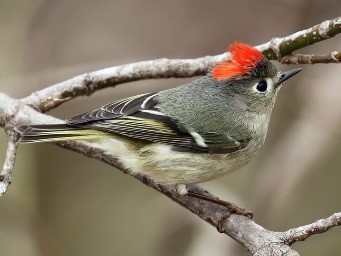
These bird walks make it wicked easy to hone your birding skills
Clip out this column and pin it to the refrigerator. For online readers, pin your computer to the refrigerator. Eleven birding highlights are about to happen.
Every May, the Penobscot Valley Chapter of Maine Audubon assembles a series of morning bird walks, free and open to everyone. There are several reasons these walks have become so popular.
For starters, they’re great for beginners. The walks are located where it’s easy to see many birds. It’s singing season, so most birds are joyfully announcing their whereabouts. Participants can appreciate birds by sight and sound without much effort.
Better yet, beginners can be assured of being surrounded by other beginners. No pressure. Even the shyest participants can anticipate that someone will ask the question they’ve been thinking.
All but one of these chapter walks start at 7 a.m. and conclude by 8:30 a.m. All are in or near Bangor. This gives most participants a chance to enjoy the walk and still get to work on time.
The walks have a funny way of organizing themselves. Excited participants tend to cluster toward the front with the leader. Semi-interested participants, perhaps dragged along by a friend, tend to tag along in the rear, conversing on such weighty topics as “What’s wrong with the Red Sox?”
The leaders have a secret, built-in advantage. They’re not only familiar with the route being walked, but they’ve often led these same walks in previous years. They not only know what the birds are, they know where the birds are.
For instance, on May 20, I’ll reprise a walk I’ve led for many years along the access road to Leonard’s Mills in Bradley. It is the most absurdly predictable walk in the history of walks.
Chestnut-sided warblers and American redstarts will be near the entrance. An ovenbird will sing a hundred yards down the road, followed by another near the office parking lot. On the other end, the forest around the Leonard’s Mills parking lot will have singing black-throated blue and green warblers, pine warblers, white-breasted nuthatches, Blackburnian warblers and probably an eastern wood-pewee. Under the powerlines, I can count on swamp sparrows and common yellowthroats. I don’t have to guess or search. They’re in the same places every year. I can even predict the likelihood of a few mosquitoes once the morning warms up.
As you enjoy the walks, there is one thing you absolutely must do: make the leader work! What did the leader see that allowed such a quick identification? How did the leader recognize the song? How does the leader remember the song? What behavior did the bird do that was a tip off to its identification?
For instance, hairy and downy woodpeckers resemble each other, but the obvious size difference isn’t so obvious at a distance. However, only a downy will go up to the twigs at the top of the tree. The bigger, longer-billed hairy woodpecker just can’t forage very well up there among the slender branches. It’s a dead giveaway, but only if you know the secret.
Or let’s say a hawk flies by. The first thing a novice must do is figure out if it is actually a hawk. The second thing might be to look for color and field mark patterns. A more experienced birder already suspects by size, shape and flight style that the bird is not a crow. The experienced birder is already categorizing the raptor into its family. There are three families with multiple members in Maine. Falcons are streamlined like a jet fighter, able to overtake birds in the open. Accipiters have shorter wings and longer tails. They are built for maneuverability, and hunt by sneak attack, able to overtake birds in the woods. Buteos are the broad-winged, short-tailed hawks that circle in the air, or perch on branches, waiting to pounce on rodents. They are neither swift nor sneaky. Here’s a wicked easy chance to learn such secrets.
The entire schedule of walks is on the Penobscot Valley Chapter of Maine Audubon’s website at pvc.maineaudubon.org. These are by no means the only walks going on. Other Audubon chapters offer their own fun. The Downeast Chapter has lined up 14 walks over five weeks. Find that schedule at downeastaudubon.org. Many of Maine’s land trusts offer walks. I’ll lead one for the Piscataquis County Soil & Water Conservation District at Law Farm in Dover-Foxcroft on May 11.
No matter where or when you join a walk, remember the new rule: Make the leader work!
Bob Duchesne serves as vice president of Maine Audubon’s Penobscot Valley Chapter. He developed the Maine Birding Trail, with information at mainebirdingtrail.com. He can be reached at duchesne@midmaine.com.